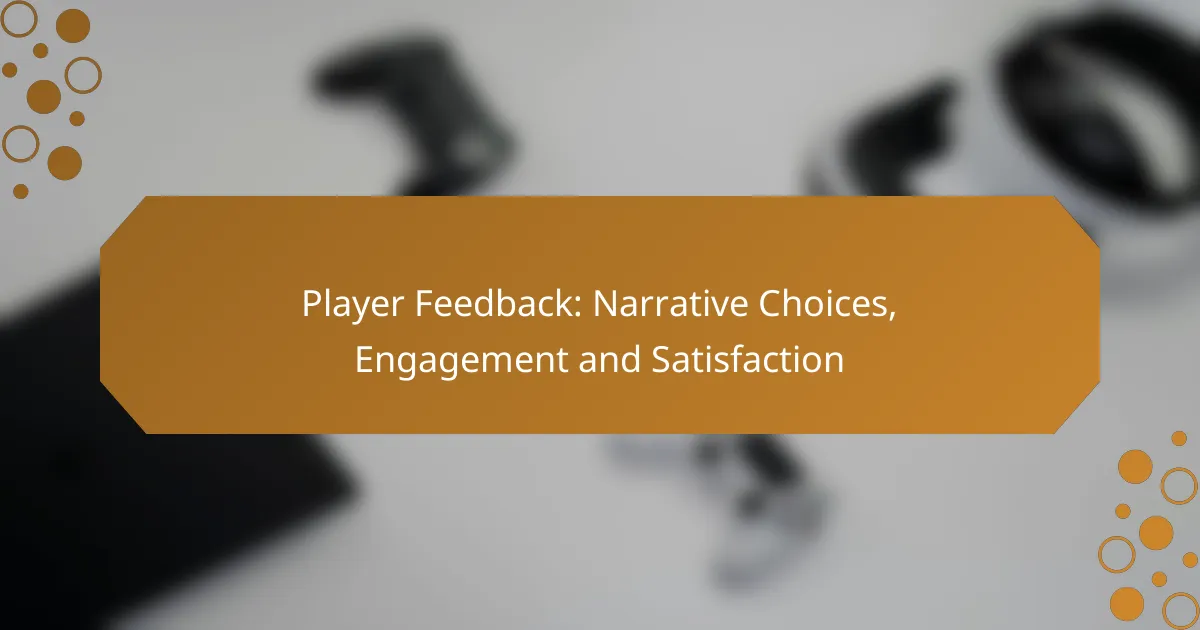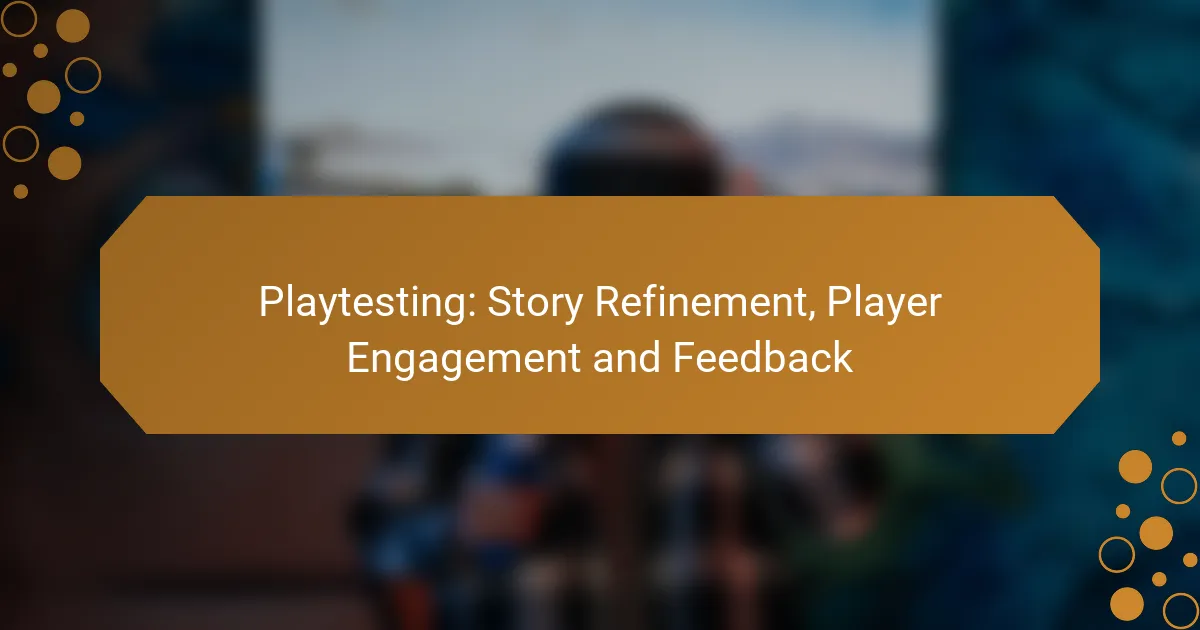A/B testing plays a crucial role in shaping storyline variations by enabling developers to assess different narrative elements and gauge player preferences. This approach not only highlights which storylines captivate users but also informs content creation, ultimately enhancing the overall gaming experience. By analyzing player responses, developers can make data-driven decisions that lead to improved engagement and satisfaction.
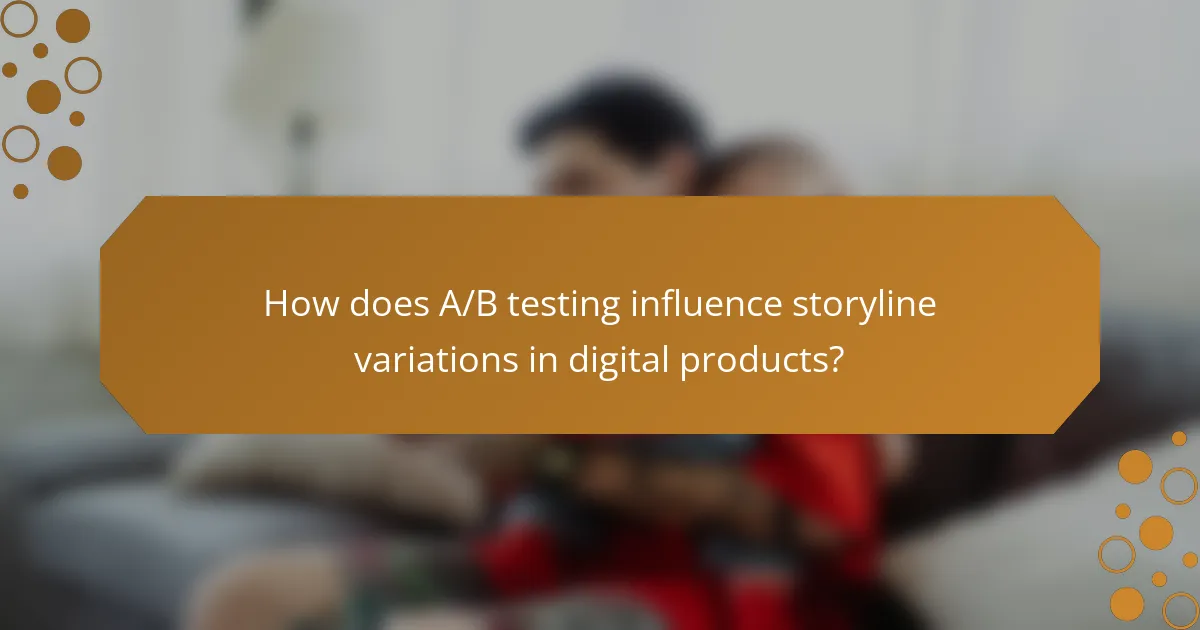
How does A/B testing influence storyline variations in digital products?
A/B testing significantly impacts storyline variations by allowing developers to compare different narrative elements and measure user preferences. This method helps identify which storylines resonate more with users, ultimately guiding content creation and enhancing player experience.
Impact on user engagement
User engagement is often heightened when A/B testing is employed to tailor storylines. By presenting different narrative paths, developers can analyze which variations keep players more invested in the content. Engaging storylines can lead to longer play sessions and increased interaction with the product.
For instance, a game that tests two different plot twists may find that one version results in players spending more time exploring the game world. This insight can inform future content updates and marketing strategies.
Effect on conversion rates
A/B testing can directly influence conversion rates by optimizing storyline variations that lead to higher user satisfaction. When players connect with a storyline, they are more likely to make in-game purchases or subscribe to premium services. Testing different narratives can reveal which elements drive these decisions.
For example, a digital product that offers a compelling storyline may see conversion rates increase by tens of percent when users feel emotionally invested. Developers should focus on testing storylines that enhance the overall user experience to maximize revenue potential.
Case study: Netflix’s content testing
Netflix effectively uses A/B testing to refine its content offerings, including storyline variations in its original programming. By analyzing viewer engagement and preferences, Netflix can determine which plotlines or character arcs attract more viewers and retain subscriptions.
For example, Netflix might test different endings for a series to see which one resonates better with audiences. This data-driven approach allows them to make informed decisions about future seasons and marketing strategies, ultimately enhancing viewer satisfaction and loyalty.
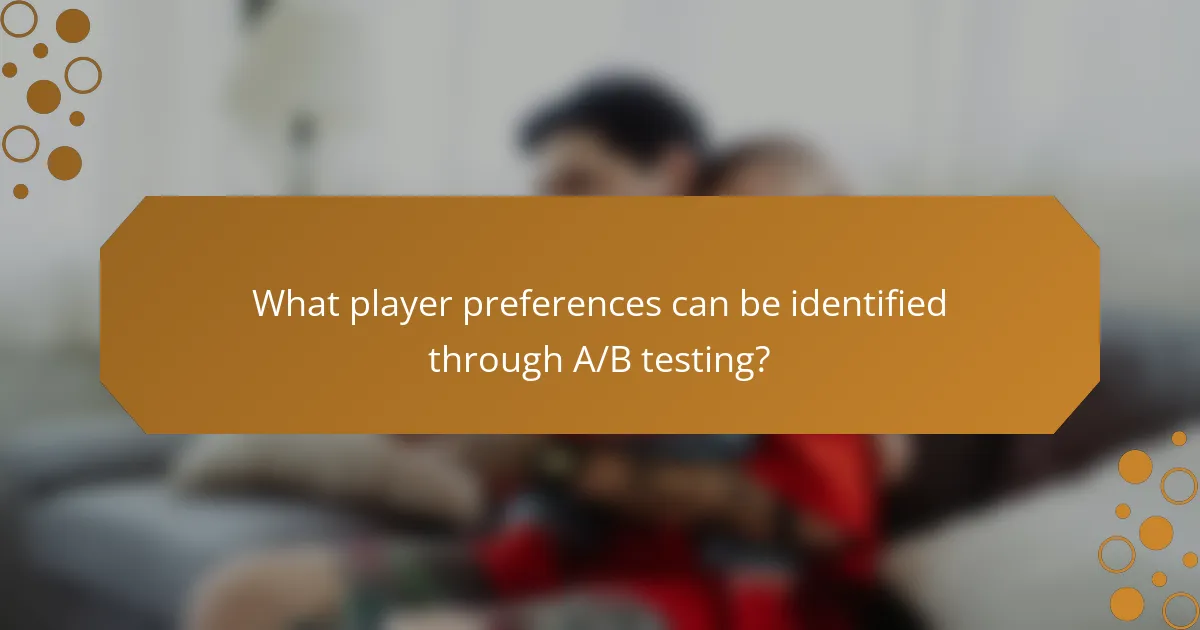
What player preferences can be identified through A/B testing?
A/B testing helps identify player preferences by comparing different game elements to see which variations yield better engagement and satisfaction. By analyzing player responses to these variations, developers can make informed decisions that enhance the gaming experience.
Demographic influences on choices
Demographics such as age, gender, and geographic location significantly impact player preferences. For instance, younger players may prefer fast-paced action, while older players might enjoy strategic gameplay. Understanding these influences allows developers to tailor content that resonates with specific audience segments.
Additionally, cultural factors can shape preferences. Players from different regions may have varying tastes in game aesthetics, storylines, and mechanics. A/B testing can reveal these nuances, enabling targeted marketing strategies and localized content development.
Behavioral patterns in gameplay
Behavioral patterns, including playtime duration and in-game spending habits, are crucial for understanding player preferences. A/B testing can reveal which features keep players engaged longer or encourage them to make purchases. For example, testing different reward systems can show which incentives lead to higher retention rates.
Moreover, analyzing how players interact with various game elements, like tutorials or challenges, can inform design improvements. By observing player behavior, developers can optimize gameplay experiences to align with user expectations and preferences.
Example: Fortnite player feedback
Fortnite frequently employs A/B testing to refine its gameplay and features based on player feedback. For instance, they might test different weapon balancing or seasonal events to determine which changes enhance player enjoyment and retention. Feedback from these tests helps the developers understand what keeps players engaged.
Through A/B testing, Fortnite has learned that players respond positively to limited-time modes and unique challenges. By continuously adapting to player preferences, they maintain a dynamic gaming environment that appeals to a broad audience, ensuring ongoing success in a competitive market.
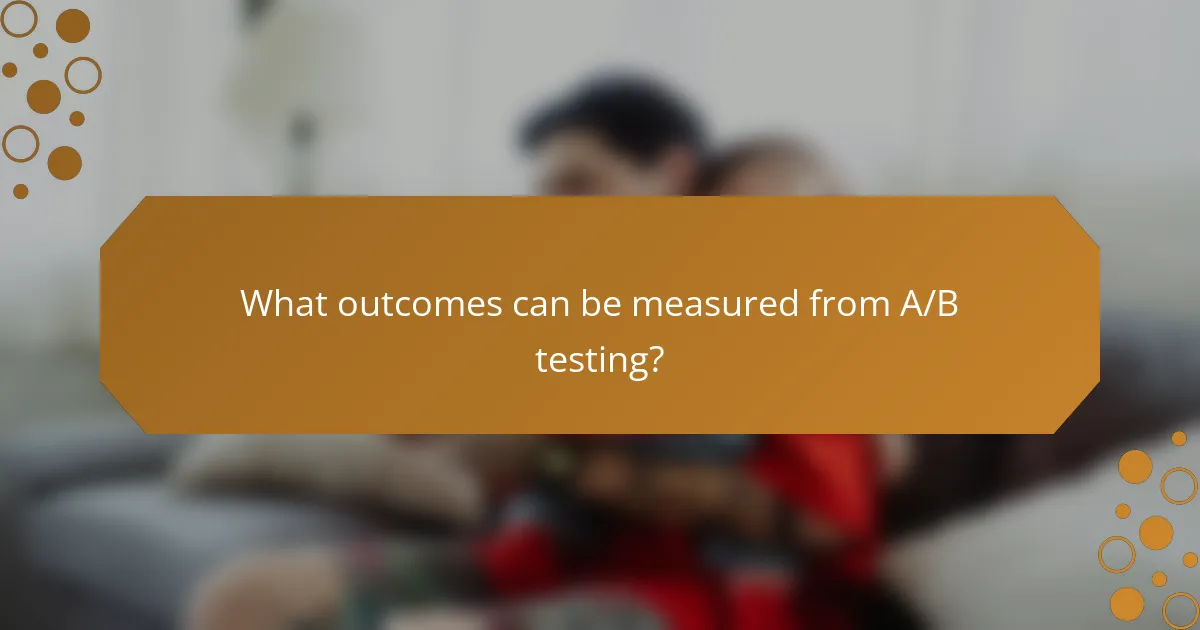
What outcomes can be measured from A/B testing?
A/B testing allows for the measurement of various outcomes, including user engagement, conversion rates, and overall satisfaction. By comparing two or more variations of a digital product, businesses can identify which version performs better in achieving specific goals.
Success metrics for digital products
Success metrics for digital products typically include conversion rates, user engagement, and retention rates. These metrics help determine how effectively a product meets user needs and drives desired actions, such as purchases or sign-ups.
Commonly used success metrics are click-through rates (CTR), average session duration, and bounce rates. Tracking these metrics can provide insights into user behavior and preferences, guiding future design and feature decisions.
Long-term player retention rates
Long-term player retention rates are crucial for assessing the sustained success of a digital product, especially in gaming and subscription services. High retention rates indicate that users find ongoing value in the product, which can lead to increased lifetime value.
To measure retention, businesses often analyze cohorts over specific time frames, such as 30, 60, or 90 days. Aiming for a retention rate above 20-30% in these periods is generally considered a positive outcome.
Example: Spotify’s feature testing
Spotify frequently employs A/B testing to refine its features and enhance user experience. For instance, they might test different layouts for playlists or variations in music recommendation algorithms to see which version leads to higher user engagement.
Through these tests, Spotify can gather data on user preferences, allowing them to make informed decisions that improve overall satisfaction and retention. This iterative approach has contributed to their success in maintaining a competitive edge in the streaming industry.
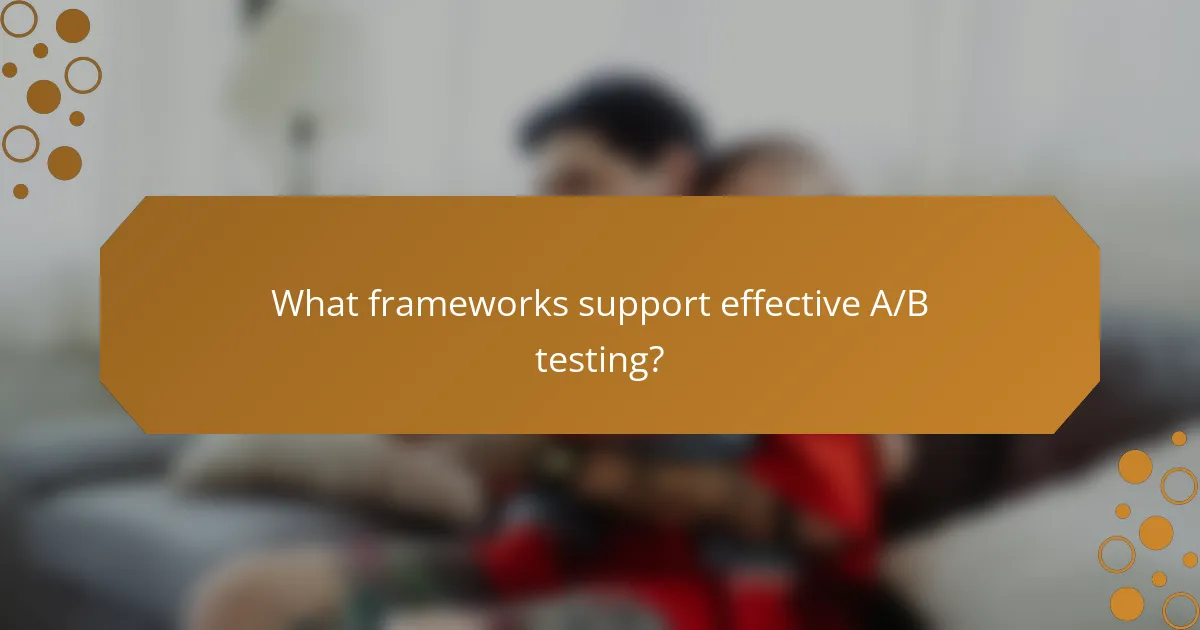
What frameworks support effective A/B testing?
Effective A/B testing frameworks provide structured approaches to design, execute, and analyze experiments. These frameworks ensure that tests yield reliable data, allowing for informed decision-making based on player preferences and outcomes.
Best practices for test design
When designing A/B tests, clarity in objectives is crucial. Define what you aim to learn, such as player engagement or conversion rates, and ensure that the variations are distinct enough to yield meaningful insights. Aim for a sample size that is statistically significant to avoid misleading results.
Consider the timing and duration of your tests. Running tests for a minimum of one to two weeks can help account for variations in player behavior over time. Additionally, avoid testing during holidays or major events that could skew results.
Tools for A/B testing analysis
Numerous tools are available for A/B testing analysis, each offering unique features. Google Optimize is a popular choice for its integration with Google Analytics, allowing for seamless tracking of user interactions. Optimizely and VWO are also widely used for their robust testing capabilities and user-friendly interfaces.
When selecting a tool, consider factors such as ease of use, integration with existing systems, and the depth of analytics provided. Many tools offer free trials, enabling you to evaluate their effectiveness before committing to a subscription.

How can A/B testing drive innovation in digital storytelling?
A/B testing can significantly enhance digital storytelling by allowing creators to experiment with different narrative elements and gauge audience preferences. This iterative process helps identify which variations resonate most with players, leading to more engaging and effective storytelling experiences.
Emerging trends in narrative design
Recent trends in narrative design emphasize player agency and interactivity. Storylines are increasingly being crafted to adapt based on player choices, creating a more personalized experience. This shift encourages designers to explore diverse narrative paths and outcomes, enhancing replayability.
Another trend is the integration of data analytics into the storytelling process. By analyzing player behavior and feedback, creators can refine their narratives in real-time, ensuring that the content remains relevant and engaging. This data-driven approach is becoming essential in the competitive landscape of digital storytelling.
Future of player-driven content
The future of player-driven content lies in deeper immersion and customization. As technology advances, players will expect more dynamic narratives that respond to their decisions in meaningful ways. This could involve branching storylines that evolve based on cumulative player choices, creating unique experiences for each individual.
Moreover, the rise of virtual and augmented reality is set to transform how stories are told. These technologies allow for more interactive environments where players can influence the narrative through their actions, further blurring the line between player and storyteller.
Example: Interactive storytelling in games
Interactive storytelling in games like “The Witcher” series exemplifies how A/B testing can enhance narrative design. Players make choices that affect character relationships and plot outcomes, demonstrating the impact of player preferences on storytelling. A/B testing can help developers fine-tune these choices to maximize engagement.
Another example is “Detroit: Become Human,” which features multiple endings based on player decisions. By testing different narrative branches, developers can identify which storylines resonate most with players, ensuring a more compelling and immersive experience. This approach highlights the importance of player feedback in shaping future content.

